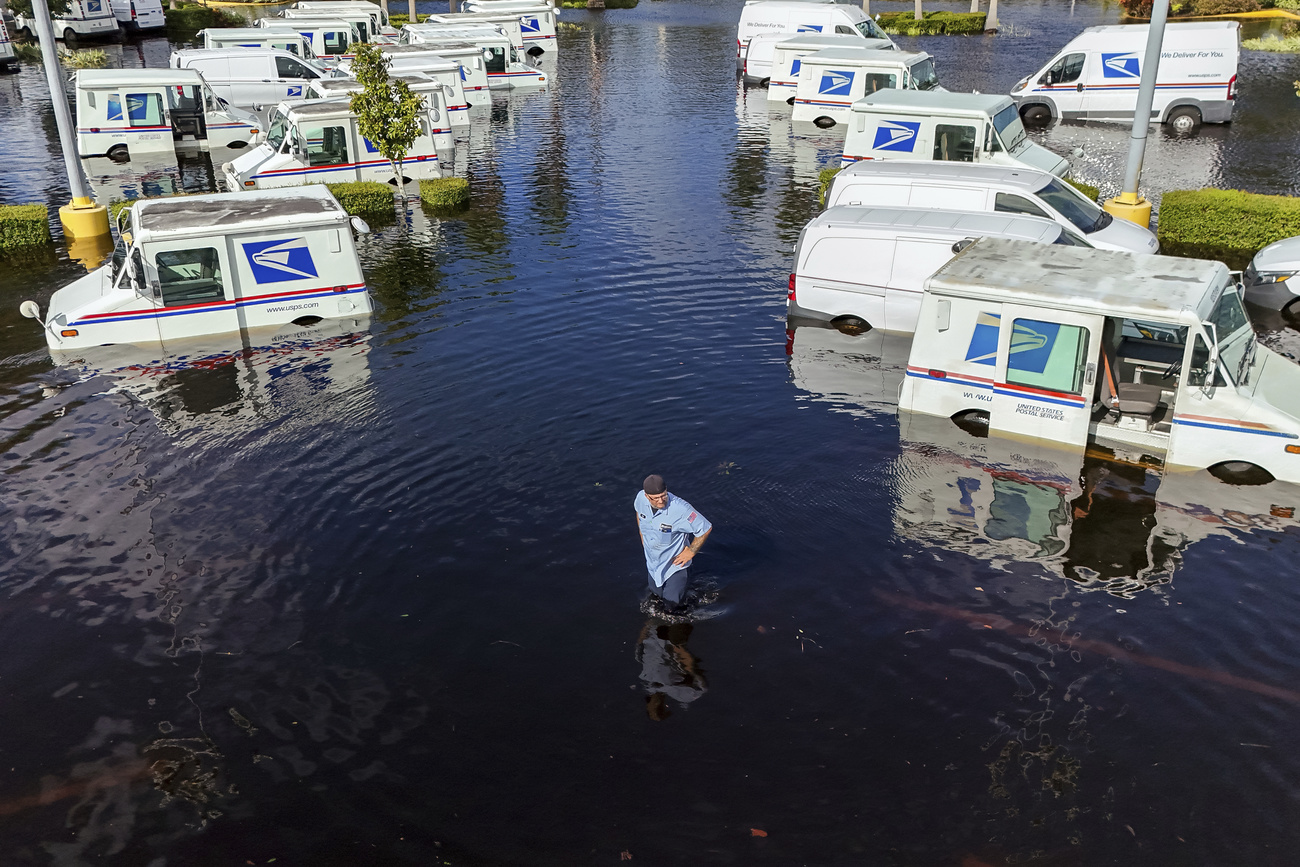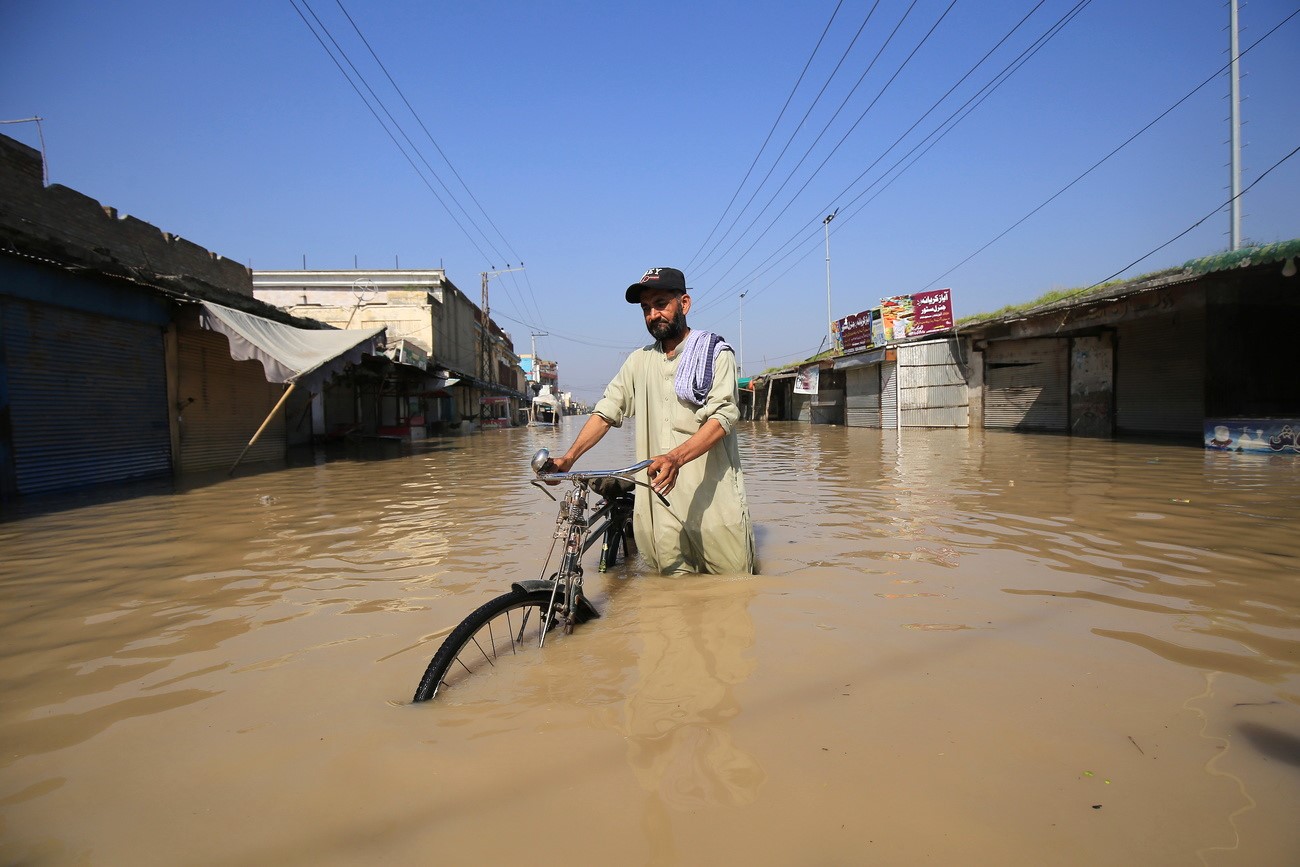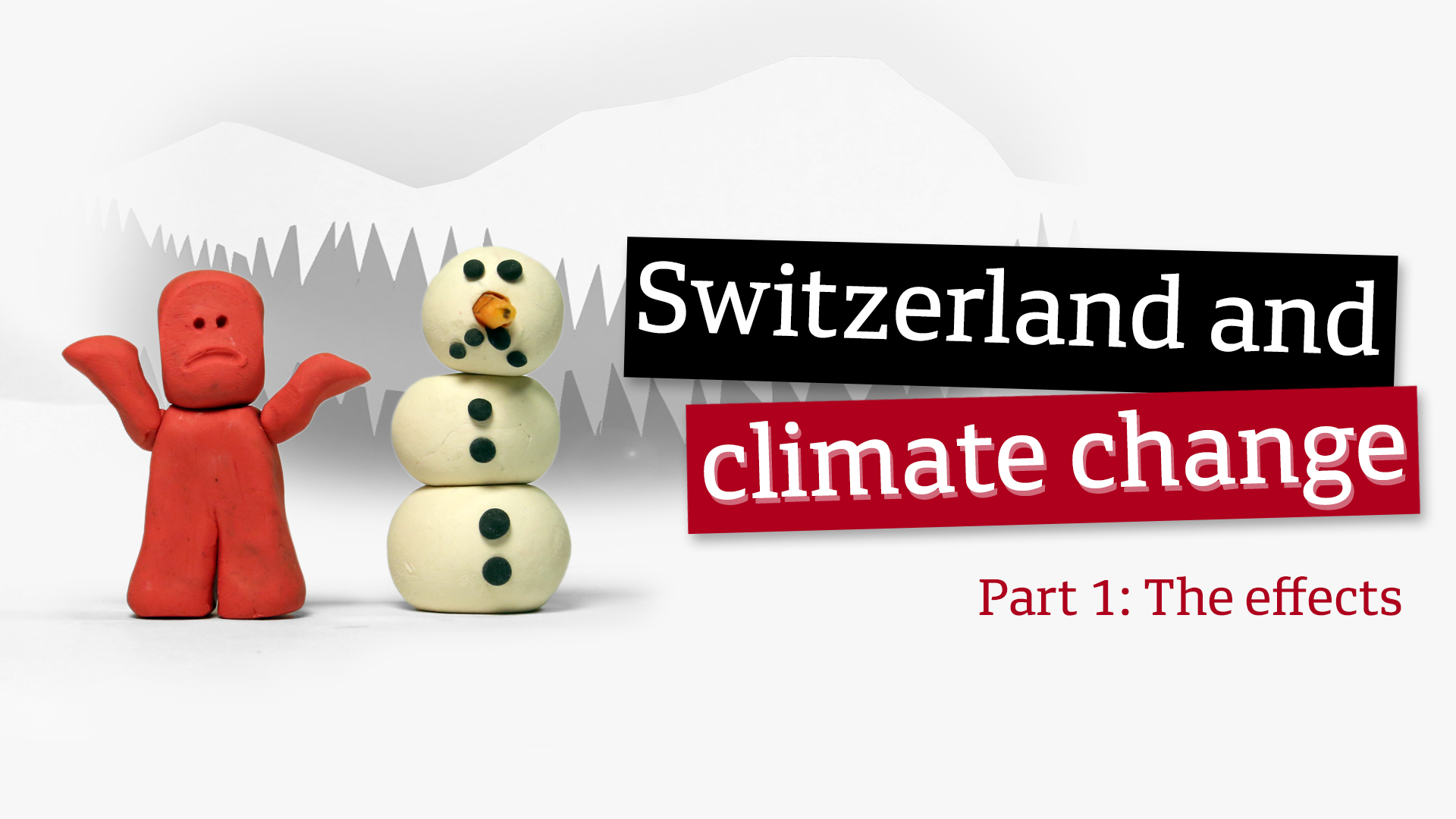COP29: Switzerland and the world under pressure to deliver carbon cuts

It’s clearly crunch time as states prepare to gather for the United Nations COP29 climate summit in Azerbaijan next week. What progress has been made on global climate targets, and where does Switzerland stand to reduce its carbon footprint?
The warnings are as stark as they get. “Playing with fire”, “running out of time”, “teetering on a planetary tightrope” – researchers and officials tracking efforts to limit global warming below the critical 1.5 degrees Celsius (2.7 degrees Fahrenheit) threshold have not minced words ahead of the UN Climate Change Conference taking place in Baku, Azerbaijan, from November 11-22.
Under the Paris Agreement, industrialised countries have committed to providing $100 billion per year to finance climate protection measures in developing countries by 2025. This target was achieved for the first time in 2022. COP29 aims to define the new common financing target for the period after 2025.
There are also plans to adopt the rules for implementing the global market-based mechanism, which allows countries to implement climate protection projects abroad and to count the emission reductions achieved towards their own climate target.
Finally, the conference aims to prepare the new climate objectives to be implemented by countries by 2035. The major challenge will be to determine in what form countries will endorse the recommendations of the previous COP, namely the development of renewable energies and energy efficiency by 2030 and the abandonment of coal, oil and gas by 2050. The objectives must be communicated in 2025.
Source: Swiss Federal Office for the Environment
“No more hot air, please,” said Inger Andersen, executive director of the UN Environment Programme (UNEP), at the recent launch of its “Emissions Gap Report 2024”.External link
The UNEP authors warn of a “massive gap between rhetoric and reality”. Emissions are not going down fast enough and nations – especially the G20 countries responsible for almost 80% of global emissions – need to be much more ambitious and make “dramatically stronger” pledges to close the huge emissions gap.
Participating countries will discuss emissions targets in Baku and submit updated commitments by February 2025 ahead of the next UN climate talks in Brazil.
The UNEP researchers say the “quantum leap” in ambition must include an unprecedented global mobilisation of renewable energy, forest protection and energy efficiency measures, among others, to steer the world off the current path towards a “catastrophic” temperature increase of 2.6-3.1°C above pre-industrial levels over the course of this century.
Over 40% of major companies, cities, and regions around the world have yet to establish targets for reducing greenhouse gas emissions, according to the research coalition Net Zero Tracker. In Switzerland the situation appears better. More than two-thirds of the 30 largest companies on the Swiss stock exchange have CO2 reduction targets to reduce their net greenhouse gas emissions to zero by 2050. Some of Switzerland’s 26 cantons have also made progress in their climate and energy policies, in particular in the building sector, saidExternal link WWF in August. But there are important differences between regions and no canton is yet on the path to limiting global warming to 1.5 degrees, it added.
Glimmers of hope in solar power and clean energy
Amid the gloomy news about the emissions gap, the tremendous growth in clean energy, in particular solar power, is nonetheless offering some hope. World governments agreed to triple renewable energy generation capacity by 2030 and move away from fossil fuels at the COP28 climate conference in Dubai last December.
UNEP estimates that accelerating the deployment of solar and wind energy could achieve 27% of the total emissions reduction required by 2030, and 38% by 2025. Halting deforestation could contribute an additional 20% reduction. The remaining reductions could be achieved through improved energy efficiency, electrifying buildings, transport and industry, as well as reducing methane emissions from fossil fuel facilities.
In its annual World Energy Outlook report, the International Energy Agency (IEA) showsExternal link solar overtaking nuclear, wind, hydro, gas and, finally, coal, to become the world’s single-largest source of electricity by 2033.
Clean energy is growing at an “unprecedented rate”, the IEA says. But this expansion is happening alongside a rise in demand for energy, including power produced by burning coal. The IEA expects demand for oil and gas to peak later this decade and puts the world on pace to hit 2.4°C degrees of warming by the end of this century.
There is still an “increasingly narrow, but still achievable” path to staying below 1.5C, it says. This would require more clean electricity, faster electrification and a 33% cut in emissions by 2030.

More
Switzerland to call for climate finance contributions from China and Russia at COP29
Has Switzerland made progress on emissions targets?
For its part, Switzerland has pledged to reduce greenhouse gas emissions by at least 50% by 2030 compared with 1990 levels, and by an average of 35% for the period from 2021 to 2030. It has also promised net-zero CO2 emissions by 2050.
In 2022, Switzerland emitted 41.6 million tonnes of CO2 equivalents domestically. This is comparable with countries like Norway or Portugal. Overall, emissions were 24% below their 1990 level.
The Federal Office for the Environment remains confident that the Alpine nation is on track to meet its objectives. “In addition to measures taken at home, measures abroad should also contribute to achieving the targets,” spokesperson Robin Poëll told SWI swissinfo.ch.
In recent years Switzerland has relied on offsetting part of its emissions by investing in climate projects abroad. The Alpine nation is one of the most active states in pursuing bilateral agreements permitted under the Paris climate agreement. It has concluded climate deals with over a dozen countries, including Thailand, Peru and Senegal. ¨¨
“Swiss climate policy up to 2030 has been inadequate for years and is not being improved.”
Georg Klingler, a climate expert at Greenpeace Switzerland
But countries are divided over whether carbon offsetting schemes are actually resulting in genuine CO2 reductions. Some groups, like WWF and the Climate Change Performance Index, have been critical of Switzerland’s heavy investment in offsetting abroad, which is cheaper, rather than making important cuts at home.
Switzerland is making progress, insists Poëll: “National emissions have fallen considerably in recent years. Of note are developments in buildings and industry. By 2030, the measures contained in the revised CO2 Act should make it possible to reduce national emissions by around 37% compared with 1990 levels.”
The remaining CO2 reductions should be achieved through climate protection projects abroad, financed by the government and companies like fuel importers, says the environment office.
Switzerland’s climate efforts ‘insufficient’, say monitors
However, the Climate Action Tracker (CAT),External link a Berlin-based independent group monitoring climate policy around the world, questions whether Switzerland is really on track. In its latest update, it rates Swiss climate action and progress as “insufficient”.
CAT says Swiss climate policies and legislation are getting better, but targets are inadequate, especially when it comes to covering domestic CO2 emissions. For the 2030 objective, Swiss parliamentarians decided against writing strict CO2 reduction targets into law (i.e. 75% of reduction to be carried out in Switzerland and a maximum of 25% abroad). The government now remains free to decide.

More
The reality of climate change in Switzerland
“Switzerland is making significant progress with its policies, moving closer to being on track to meet its climate goals and international commitments, said CAT analyst Judit Hecke. “The real challenge lies ahead in the implementation phase.”
WWF and Greenpeace Switzerland are more critical. They have serious doubts about the impact of recently enacted laws and the Swiss government’s commitment to reducing greenhouse gas emissions.
Greenpeace points out that Swiss targets and policy fall well short of those of comparable European countries: the EU has a 2030 target of 55%, Denmark 70%, Finland 60% and carbon neutrality by 2035, and Germany 65%. Furthermore, Swiss policy suffers from significant regulatory gaps, such as a lack of targets for the financial sector and reducing the emissions caused by Switzerland worldwide is absentExternal link from the country’s climate agenda, it adds.
“The Swiss contribution towards financing climate protection should be doubled to at least $1 billion a year due to Switzerland’s economic strength and greenhouse gas emissions abroad caused by Switzerland’s high consumption,” according to Georg Klingler, a climate expert at Greenpeace Switzerland.
“Swiss climate policy up to 2030 has been inadequate for years and is not being improved,” he said.
Edited by Veronica De Vore/ds

More
Newsletters

In compliance with the JTI standards
More: SWI swissinfo.ch certified by the Journalism Trust Initiative











You can find an overview of ongoing debates with our journalists here . Please join us!
If you want to start a conversation about a topic raised in this article or want to report factual errors, email us at english@swissinfo.ch.